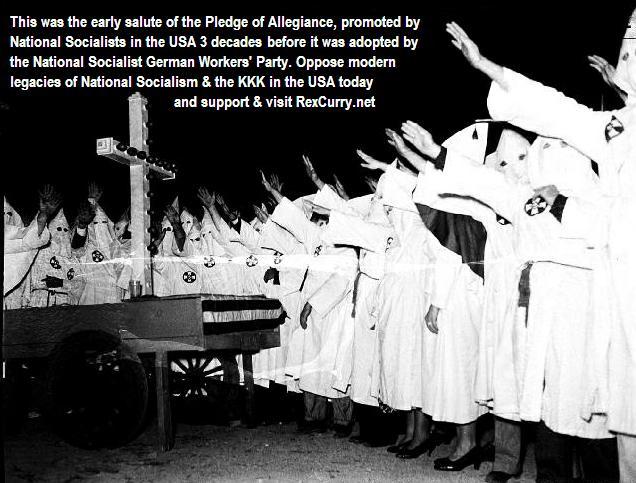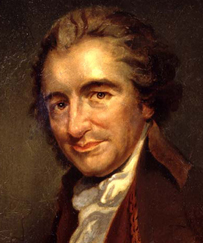https://blogger.googleusercontent.com/img/b/R29vZ2xl/AVvXsEi9TuPxgKsfUuwrRmj_XmfsuWDzV5HPkrqD_jp-XEvZSyJNCcbZRQni8sgcgKk2aXsy27R4OEV_Mh8Ypcpp0R-8DmXV2MZEz0FlMzB7bOqafeTYw99bKUULjFgIjqwTrkX79LgqrElaa1GJ/s1600-r/civilrights.jpg
http://knowledgenews.net/moxie/moxiepix/a2090.jpg
http://www.d.umn.edu/~mull0323/images/attack.jpg
https://blogger.googleusercontent.com/img/b/R29vZ2xl/AVvXsEixoG7CkS8drKcDwPRr3baFLb65GaD2GC18HZAoZiQtjN4p6pUdAa1xTC7CUq4bMMM4CkUynuylzw0xUFRF2jCxkBaZkmi-rBYZfxJZx2Cr5IX_5O0ehd4t2VekbIlo6Veyv__rtgaFBsk/s400/Freedom+Riders.bmp
http://www.ket.org/civilrights/images/gal17_demonstrators_drag.jpg
By the 1950s, slavery had been outlawed in the
USA for nearly 100 years now, but southern racists had come up with other forms of tyranny to prevent Black Americans from exercising their rights as Americans. Poll taxes, unfairly administered literacy tests and various acts of intimidation denied African Americans their right to vote. The concept of "separate but equal" deprived African Americans of public facilities and a good quality education. They weren't allowed to go to the same restaurants or schools that white people went to and they weren't even allowed to use the same bathrooms or drink from the same water fountain. There were even signs that said "White Only" and "Colored". In 1954 the U.S. Supreme Court said that "Separate education facilities are inherently unequal." Journalism, especially TV had a huge impact on the
USA during the Civil Rights Movement. Northern newspapers like the New York Times and the Boston Globe covered the movement but it was television news that had a bigger impact. TV cameras showed African Americans being cursed, spit on, attacked by police dogs, and blasted with fire hoses for trying to exercise the rights that were guaranteed to them by the Constitution.
The First Great TV News Story
By the late 1950s, television was competing against newspapers everyday. The first great television news story was the Civil Rights Movement. The Civil Rights Movement was a great TV news story but the South didn't want network journalist to repost it. Many southern newspapers refused to publish news that might halt their dominant ways. When segregationist realized that television was disrupting the system they started to see reporters as enemies. They started putting signs up on motels that read "NO DOGS, NIGGERS, OR REPORTERS ALLOWED." Many southerners came up with nicknames for ABC, NBC, and CBS. The nicknames were: Afro Broadcasting Company, Colored Broadcasting Company, and Nigger Broadcasting Company. But name calling wasn't all, violence also became a part of the Southerners fight against the journalist. Once in
Alabama in 1965 NBC's reporter Richard Valeriani was hit with an ax handle and a state trooper saw the whole thing and all the state trooper did was take the ax away from the guy told him that he had done enough damage for one night and didn't even arrest the guy.
Knocking Down Walls in Little Rock
Central High School in
Little Rock, Arkansas was the setting of one of the biggest stories of the Civil Rights Movement. During the summer of 1957, African-American leaders in
Little Rock challenged the segregated school policy by enrolling nine black students in one of the city's public high schools which was all white. When school started in September, news’s cameras were at the school to broadcast nationwide the nine students walking to school. But Governor Orval Faubus had ordered the Arkansas National Guardsmen to prevent the nine students from entering the school. That day black leaders had arranged for the students to be brought to school in a police car so they could be protected , but one of them, Elizabeth Eckford didn't have a phone, therefore she couldn't get the message. So
Elizabeth walked to school alone and she was greeted by a crowd of angry segregationists yelling out "Lynch her! Lynch the nigger bitch!" President Eisenhower ordered the soldiers to protect the Little Rock Nine. So for the rest of the school year news’s cameras televised the soldiers protecting the students pointing their bayonets to the mob of angry white segregationists. Every morning and afternoon the nation would watch as military jeeps escorted the students to and from school.
Breaking Barriers at the University of Georgia
By early 1961, the
U.S. had a new young president; John F. Kennedy. Civil right leaders were hoping that JFK would provide support for their pacific fight against racial equality. A federal court ruled that the
University of Georgia for the first time in its 175 year history had to admit African-American students. The only two African-American students that attended the university were Hamilton Holmes and Charlayne Hunter. Since Hunter was a female she was required to live on campus and Holmes being a male was allowed to move off campus. The image of Hunter staring at the ground while being insulted and spit at by white students was transmitted on TV every night for days. One night a white girl tossed a quarter on the ground in front of Hunter and yelled at her saying "Here, nigger. Here's a quarter. Go change my sheets." Another scene of hatred and racism was when students gathered outside Hunter's dormitory holding a banner that said "Nigger, go home!" Similar scenes of violence unfolded time and time again as educational institutions in the south became desegregated. Two of these institutions were the
University of
Mississippi in 1961 and the
University of Alabama in 1963.
Riding Buses for Freedom
The Civil Rights movement's next big TV story came when the Supreme Court decided to ban segregation in interstate travel. To assure that this new law was effective, in May 1961 a racially mixed group of college students purchased bus tickets to take them from
Washington,
D.C., to
New Orleans. These students were now known as "freedom writers". NBC cameraman Moe Levy boarded one of the buses with the students recording images of the ride. The freedom riders traveled through the Carolinas and
Virginia being taunted by segregationist but this stopped as soon as they entered
Alabama. But when the bus pulled into the
Montgomery station a mob of 2,000 segregationists armed with bricks, bats and pipes attacked the freedom riders. There was no footage of the attack because the mob destroyed the camera. The students lost teeth, suffered broken bones and some were disfigured for life. Levy was clubbed repeatedly and one of his legs suffered permanent injuries.
Defying the Power Structure in Birmingham
In the early 1960s
Birmingham became a battlefield in the civil rights struggle. It was in this city that 3000 black men an, women and children were arrested, and many of them were victims of police brutality. In 1963 the famous, one of the most if not the most influential black civil rights leader Reverend Martin Luther King Jr started a series of nonviolent protests with their goal being to transform the city's white power structure. The campaign began in early April. Stores were picketed and there were sit-ins at lunch counters. At the sit-ins white people would curse at the protestors and pour ketchup and syrup while the pacific protestors had to endure these attacks. In week two people started marching but the arrests count was in the triple digits figure. as the jail cells became full, black children, some still in elementary school joined the marches. Birmingham Police Officer Connor became outraged and ordered his men to use fire hoses and vicious German shepherd police dogs against the marchers. A week after these images were aired leaders reached an agreement that allowed for the first time, African Americans to shop at city stores and eat at city restaurants. President Kennedy later on went on prime time TV and spoke the words African-Americans had been waiting to hear: " We preach freedom around the world, but are we to say to the world-and much more importantly, to each other-that this is the land of the free, except for the Negroes? The time has come for this nation to fulfill its promise.
Marching on Washington
Where would be the perfect place for civil rights leaders to make their voices be heard. The answer is the nations capital. On August 28, 1963 200,000 Americans marched with their heads high and chests forward. That day the speaker that caught everyones attention was Martin Luther King Jr. He gave his famous I Have A dream Speech. "I have a dream that my four little children will one day live in a nation where they will not be judged by the color of their skin but by the content of their character.".
Back to Birmingham
Two weeks after the march in
Washington, members of the Klu Klux Klan ignited a bombed at
Birmingham's
Sixteenth Street Baptist Church on a Sunday morning. Four little girls between the ages of eleven to fourteen were killed. Television crews rushed back to
Birmingham to show the red brick remains of the church. The cameras also recorded the drama and grief at the funerals.
Seeking Voting Rights in Selma
In 1964 civil rights leaders turned their attention to blacks being denied the right to vote focusing specially in
Selma, Alabama. 57% of the residents were African-Americans but only 1% was registered voters. MLK Jr wanted to change these statistics so he started a voter registration campaign. MLK organized a march from
Selma to the state capitol in
Montgomery 50 miles to the east. The finale of this journey would be the delivery of a petition to Governor Wallace even though he opposed the event. On Sunday, March 7, 1965 about 600 men and women started walking down U.S. Route 80. They hadn't even marched more then 300 yards when they were greeted on the highway by 50 state troopers and 100 posse men. TV cameras captured footage of the policemen and posse men brutally attacking the marchers hitting them with nightsticks, kicking them and throwing tear gas at them. This violent event was called "Bloody Sunday."
Television Images Nourish a Social Revolution
Television played a key role in helping the Civil Rights movement get the Civil Rights Act of 1964 and the Voting Rights Act of 1965 passed. The images television played of the violence on Bloody Sunday or innocent people being attacked by police dogs and attacked with fire hoses was very indignating. Television is more powerful then newspapers because when you are watching the footage you get the feeling that you are actually there.















